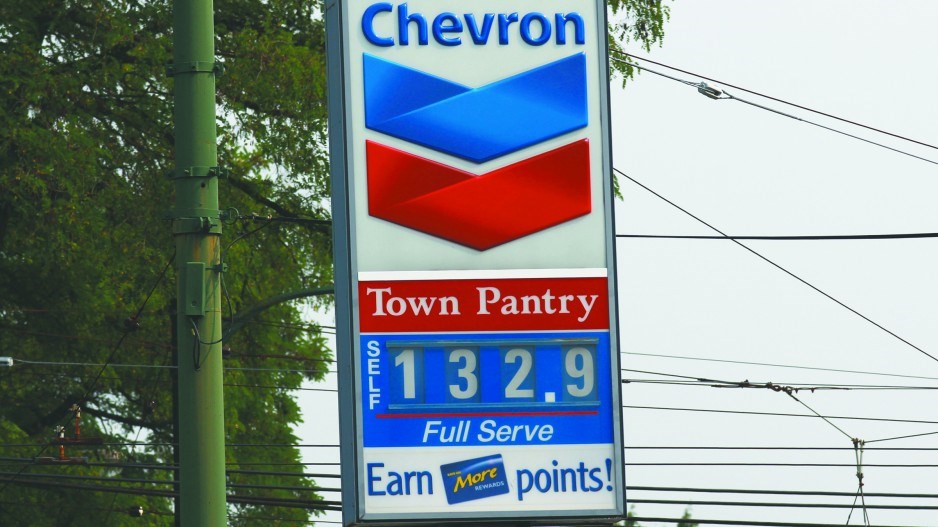Global crude oil prices down again; local gas prices still going up. Prices at the pump down on Wednesday nights but up on Saturday mornings. Almost every week. Why?
The short answer, according to energy industry analysts: crude oil prices are not accurate predictors of local gas station pump prices. Or, as Michael Ervin, president of petroleum industry consultancy MJ Ervin & Associates, pointed out, basing the regional price of gasoline on the mercantile price of crude oil would be like “saying the price of a house would follow the price of the lumber market.”
Still, with the price of U.S. crude oil down almost 15% in early July from the year’s high set on June 10, global prices still around 50% below what they were a year ago and international markets rattled over the Greek debt crisis and China stock market stumbles, prospects for lower gasoline prices should be bright. Add to that the Iran nuclear accord reached last week, which could release a flood of Iranian crude into an already oversupplied market.
But don’t expect that break at your local gas bar any time soon because, as Ervin pointed out, global supply and demand and geopolitical events dictate crude oil prices; local market pressures and the “crack spread” (refiners’ markup) on wholesale gasoline dictate regional prices.
“What gets put into [your] gas tank at the gas station isn’t crude oil; it’s gasoline, and that is very much a commodity in its own right.”
The numbers tell the tale on the difference between crude costs and the price at the pump.
The International Energy Agency’s (IEA) monthly oil price statistics show that while crude oil import costs in April 2015 were 47% lower than they were in April 2014, per-litre gas prices in Canada were down only 16% in May 2015 compared with May 2014; in the United States during the same period, the price drop was 26%.
While North American crude oil prices have dropped approximately 48% to US$51 per-barrel as of July 17 from US$98 in July 2014, the per-litre price of gasoline in Metro Vancouver has decreased only 7% to $1.38 from $1.48 over the same period.
According to the MJ Ervin & Associates second-quarter 2015 petroleum pricing report for Canada, rising wholesale gasoline prices outpaced rising crude prices, especially in western Canada, where regional refinery issues raised supply concerns. Among those concerns, according to the report, was the temporary shutdown of Western Canadian crude oil production because of widespread forest fires.
Ervin added that there are hundreds of different “makes and models of crude oil, all of which are priced differently. … So what you hear on the news is a poor indicator of what is going to happen to [local] gasoline prices.”
He also pointed out that news reports typically quote a futures price for crude, not today’s price.
“So I can’t possibly expect … the price for [crude oil] delivery next month to relate to tomorrow’s gasoline price change. There’s a tremendous amount of misinformation and misunderstanding about this.”
According to an Imperial Oil (Nasdaq:IMO) explanation of gasoline pricing in Canada, crude oil costs accounted for roughly 48% of what Canadians paid for a litre of gasoline in 2014. Taxes accounted for approximately 31%. Operating margins for refiners (14.6%) and retailers (6.4%) accounted for the balance.
Natural Resources Canada’s Fuel Focus 2014 Annual Review added that the limited capacity of Kinder Morgan’s Trans Mountain pipeline, Vancouver’s main gasoline source, and scheduled refinery maintenance in Edmonton squeezed supply and drove up prices in Metro Vancouver last year.
MJ Ervin’s second-quarter 2015 petroleum pricing report also pointed out that record inventories of crude in North America, coupled with high demand for gasoline, pushed refinery margins to an average of $0.28 per litre in June, the highest they’ve been in eight years.
As to why gasoline prices fluctuate predictably each week in Metro Vancouver, Brian Ahearn, Canadian Fuels Association vice-president, said he didn’t have specifics for each market across the country.
But Ahearn said in general the main factors in local gasoline pricing are crude oil, taxes and the markups of gasoline wholesalers and retailers.
In Vancouver, taxes and other levies add roughly $0.49 to each litre of gasoline; in Calgary they add $0.28 to each litre.
Meanwhile, the margins in gasoline sales at the pump remain thin.
Ervin estimated that from the time gasoline leaves one of Canada’s 14 refineries and is pumped into gas tanks at any of Canada’s 11,811 retail gas stations, the per-litre profit for gasoline retailers is between $0.01 and $0.02.
He said the retailer markup on gasoline “has been virtually stagnant for close to 30 years.”
Ervin added that sales from attached convenience stores and car washes generally contribute more to a gas station’s bottom line than do gasoline sales.
Small wonder then that MJ Ervin & Associates’ 2014 National Retail Petroleum Site Census found gas stations shifting to larger convenience stores and adding more car washes and quick-service restaurants.




